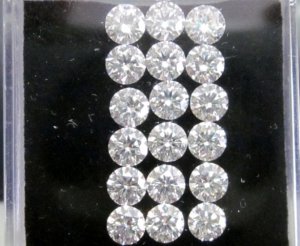whatmeworry
Brilliant_Rock
- Joined
- May 23, 2006
- Messages
- 1,095
Rockdiamond|1300382338|2874053 said:Yssie|1300332464|2873744 said:Oh, good grief.
I for one am very glad to see PSers routinely recommending that new buyers FIND OUT with their OWN EYES what is worth it to them to spend money on, and what is not. If this is a new trend, it is all for the better.
We want to talk numbers and cut performance, however we want to define that?
Let's have at it.
A D diamond will return more wavelengths than a J or a K. It will return more colour in the blue/violet range, or whatever opposes the absorbed wavelengths. This is a FACT. Yet there is (thankfully) no blind cult mentality of Buy a D, Buy a D - instead, educated consumers advise other consumers to FIND OUT what THEIR EYES can see. Despite the fact that a D is, in fact, simply BETTER - it is rarer, it is pricier, it is more prestigious, it outputs more frequencies than a G, an H, or a J. Some people can see the difference - in colour, perhaps in light output, some people can't, and this "new trend" is advising people to find out what THEY can see.
An I1 will return less light than a VVS. This is a FACT. Inclusions DO affect light return, sometimes significantly, sometimes more significantly than other times, but ultimately a broken path length WILL result in less efficient primary refractions than an unbroken ray. Some people can see the difference (and also there are the eyeclean and mind-clean aspects to consider) some people can't, and this "new trend" is advising people to find out what THEY can appreciate.
The fact that some people may be able to physically appreciate a D or a VVS over a J or an SI does NOT invalidate the opinions and observations of those who cannot.
The fact that some people may be able to physically appreciate an H&A over a near-H&A does NOT invalidate the opinions and observations of those who cannot.
I'm not getting into the discussion of how and why and if H&A is Better than a non-H&A.
I'm sorry to see this thread devolve into marketing, and I'm even more sorry and baffled to see experienced consumers advocating *against* new buyers finding out what they, personally, can and cannot appreciate - afterall *that* is what makes PS such a different and special place!
Yeah.. I think it best I bow out of this thread.
Thritto yssie- please stay.
I find your posts to be among the most well grounded, and always well written and showing great sensitivity. You consistently give sensible advice encouraging folks to look at what they are buying.
I do disagree with some points in your post above- and I pray you won't mind me respectfully debating these points as they apply here.
A D diamond will return more wavelengths than a J or a K. It will return more colour in the blue/violet range, or whatever opposes the absorbed wavelengths. This is a FACT.The two points above are where I feel you're off base.An I1 will return less light than a VVS. This is a FACT. Inclusions DO affect light return, sometimes significantly, sometimes more significantly than other times, but ultimately a broken path length WILL result in less efficient primary refractions than an unbroken ray.
How can we prove either factually?
Even if there was a machine to "prove" either point, the results would have several deficiencies.
1) no matter how we test light performance, it will , by the nature of any test, be extremely incomplete.
Unless there were results for every different lighting scenario- to say nothing of how setting affects a diamonds light performance.
The results, even if such a machine existed, and was agreed upon, would be irrelevant in many situations.
2) if we could take, as a given, that we could measure the difference in light emanating from a given IF, and a given SI2, I propose that in many cases, the results would also be meaningless to the human eye.
Like comparing two bathtubs filled with water and declaring one had one additional ounce of water- irrelevant.
Paul- I applaud you for writing this. Points about trashing the competition are totally misplaced.
David, since Yssie has bowed out. Her two points are facts. Easy to prove. The machine exists. It's called your eyes. The FACT that a D returns more light than a J is a FACT and is easily proven by their color. A J looks yellower because it is absorbing more blue light than a D. The FACT that inclusions affect light return, as an extreme example look at black diamonds. Its the inclusions that make it black. And why is it black? Because it's not returning light.
Now your point number 2) is exactly what she is saying. That it's up to an individual to decide using their eyes (not marketing hype or cut grades) if those differences are meaningful or irrelevant.




300x240.png)